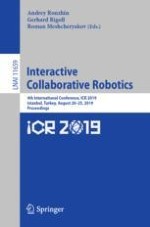2019 | Book
Interactive Collaborative Robotics
4th International Conference, ICR 2019, Istanbul, Turkey, August 20–25, 2019, Proceedings
Editors: Prof. Andrey Ronzhin, Prof. Gerhard Rigoll, Roman Meshcheryakov
Publisher: Springer International Publishing
Book Series : Lecture Notes in Computer Science
